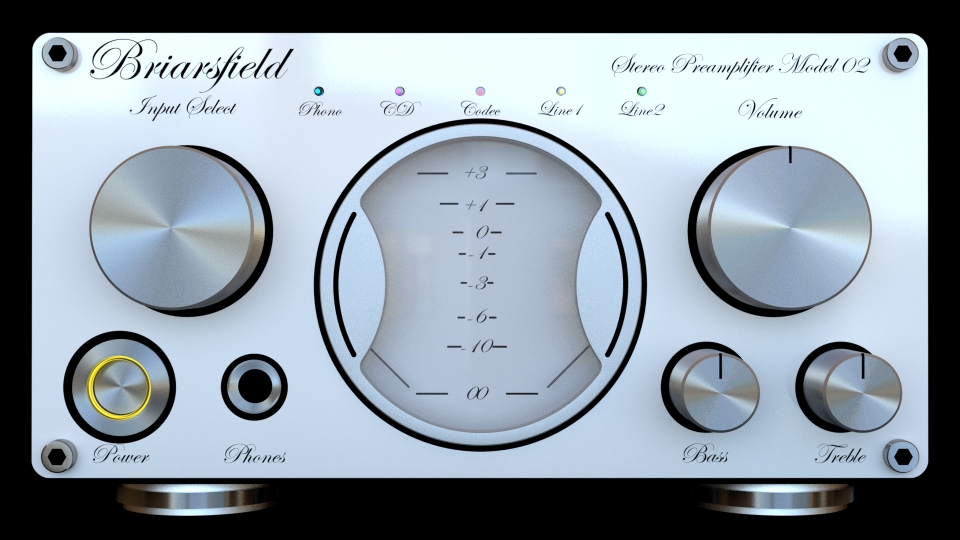
'Model 02' Preamplifier
Design spec
Vintage styled, feature rich, compact design. Emphasis on 'golden age' design language - densely laid out tactile controls with heavy analogue mechanical feel (high quality controls and substantial rotary switches).
Analogue level 'VU' meters, damped to give tactile mechanical 'weight'. Prominence of spun aluminium controls. Coloured indicator and backlighting to add vintage warmth.
Inspiration
Detail
I used to be a big collector of vintage audio gear - there was a time when I had a literal room full of silver Pioneer, quirky 70's Technics stuff etc. (most of the images scattered through my old website were of my own collection). In that era, the Japanese did build quality like nobody else; not only were their products incredibly well thought out, they had the aesthetic nailed down too.
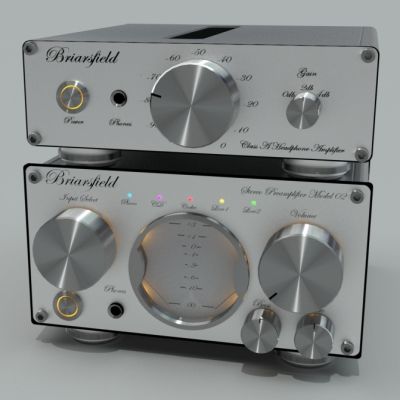 Initial draft render showing back-lit controls
Initial draft render showing back-lit controls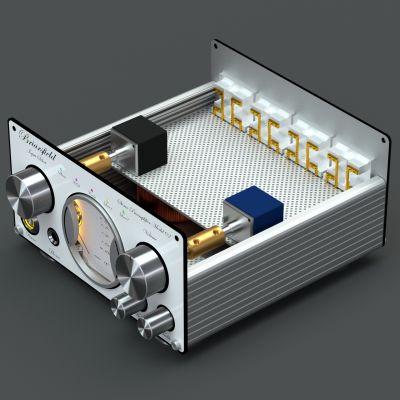 Conceptual render showing internal layout
Conceptual render showing internal layout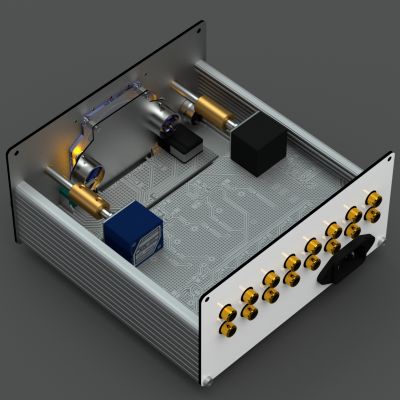 Conceptual render (2)
Conceptual render (2)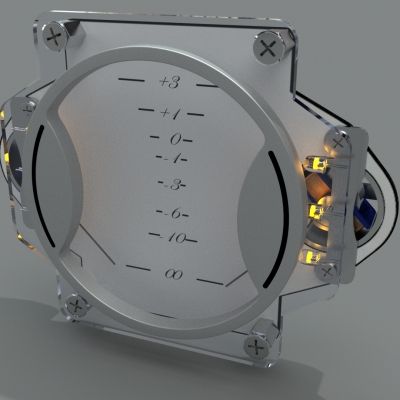 VU meter assembly
VU meter assembly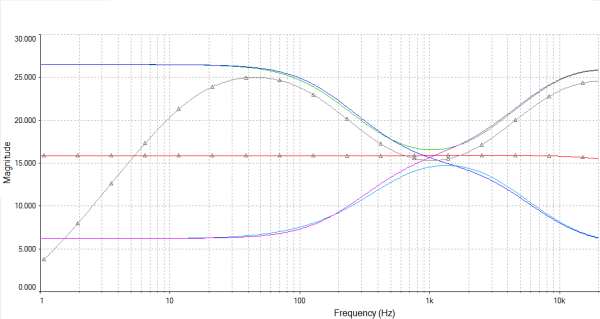 Tone control response - before (grey), other traces after modification
Tone control response - before (grey), other traces after modificationAudio seems to have two camps; one where the product is bursting at the seams with controls for everything, and the other where everything is removed, leaving only the bare essentials. There is some blurring and mid ground, but whereas modern higher end audio is mostly the latter, many vintage designs were the opposite. I've gradually gone minimalist; none of my home systems run tone controls, the only one which has any bass lift are the crossovers I built for my Celestion dipole subs, but that's just for level matching. I don't miss losing all of those features - but then, I run far better speakers than I used to, and for the most part tone controls are there to compensate where speakers lack response.
The headphones I tend to take to work are great as rugged monitors - they fold up, they're virtually indestructible - but they lack bass, or rather by design have a very accentuated upper mid response. So, in some cases, having tone control would still be a good thing - this design is essentially what I would like to have on my desk at work.
Styling
The main design problem is portioning front panel area for all the controls. The core of the design is a set of analogue VU meters, these were designed and set out first; I wanted to keep this design miniature with the same miniature footprint as the existing Briarsfield designs, making it taller was intended from the outset because of the VUs. I use an off-the-shelf aluminium enclosure, but the manufacturer doesn't produce one tall enough for this design; the solution is to stack two enclosures vertically (this has worked for Meridian among others), on the end product this doesn't really notice.
The initial concept had the volume and source control knobs backlit with amber, to key in with the VU meter lighting and to cast a warm hue over areas of the front panel around the controls. The effect worked, but the stacked control layout combined with the wash of light over the panel made the design look clumsy - unique, but not elegant. At this point I was adding accent lines to my other work so the design was modified to suit with some more contrast highlighting. the other penalty is that I try to stick to off-the-shelf components, and the spin aluminium knobs I use are only available in a few sizes - reducing the size of the knobs helped tidy up the design's appearance but it's still not optimum in my eyes.
Packaging
The design consists of two tiers consisting three separate PCB assemblies; all audio is situated on the upper assembly, which slots directly into the enclosure. This assembly also contains the volume and source select controls. The lower PCB contains the tone controls and headphone jack. A third PCB on the lower tier houses all power regulation, supplying clean D.C. to the audio circuitry. The power switch is separately hard wired, power is supplied through a miniature toroidal transformer, fixed to the base of the chassis along with the power PCB.
Tone controls
This design also has a set of tone controls; I liked the warm, neutral sound of the Technics A900 I used to own so borrowed and modified the circuit; these were 100Hz/10kHz, +-10dB so not intrusive but could add some life or weight to dull material. Running circuit analysis on the circuit shows a good example of how uneven the frequency response is on some mass-market audio gear, something I see a lot.
The frequency response of the Technics circuit is anything but linear, with the bass control giving a bump at around 100Hz, sliced off below this by a 1st order high pass filter caused by an undersized capacitor in the circuit's main feedback loop. This may seem like an odd design quirk but was almost certainly intentional; as frequency decreases, power requirement increases exponentially and uses up amplifier power quickly. Most consumer grade loudspeakers have poor bass response to start with and likewise often can't handle much low frequency power without suffering damage; an amplifier with intentionally poor low frequency response would perceptibly sound better on average quality speakers to the casual listener.
VU meters
The VU meter movements are sourced from some cheap multimeters; the quality of the meter movement is actually very good. The rub is that the left hand meter needs to be reversed, requiring it to be taken apart with the tiny moving parts rotated 180º.
The VU meter assembly is CAD designed to be ready for manufacture, using off the shelf fixings where possible and only requiring the back plate, acrylic lens and bezel to be CNC machined. The front bezel is machined from 5mm aluminium, attached to the lens with four small M2 x 5mm screws. The aluminium backplate (with VU movements attached) mounts to the lens via 5mm standoffs, the six backlight LEDs mounted to the lens also. The whole assembly is mounted to the rear of the unit's front panel.

